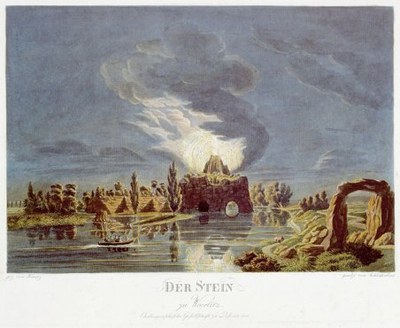Vesuvius Reception
erstellt von
—
last modified
5 years ago
© Kulturstiftung Dessau Wörlitz, Heinz Fräßdorf
© Kulturstiftung Dessau Wörlitz, Heinz Fräßdorf
Wilhelm Friedrich Schlotterbeck (1777–1819), Der Stein zu Wörlitz, aquatint by Karl Kuntz, 1797, source: © Kulturstiftung Dessau Wörlitz, Heinz Fräßdorf.

